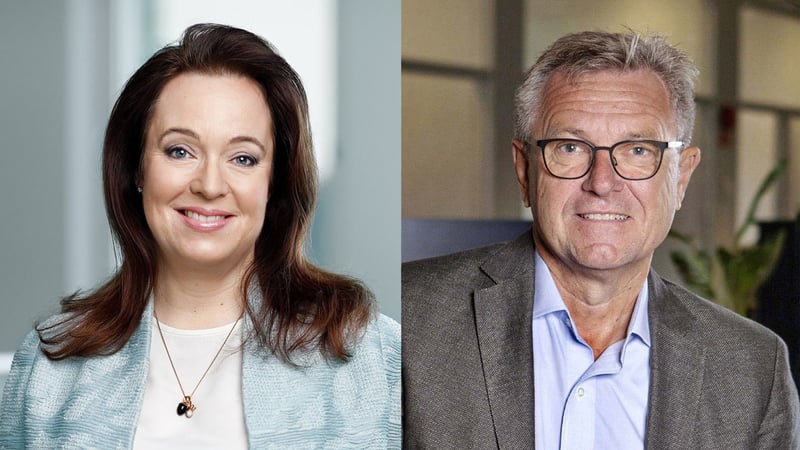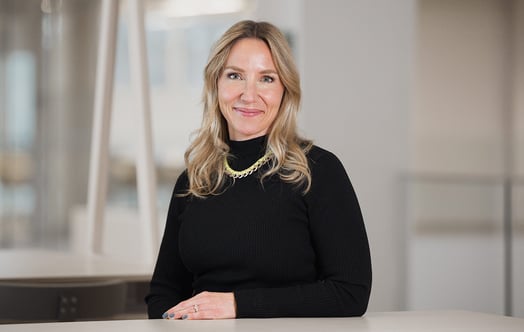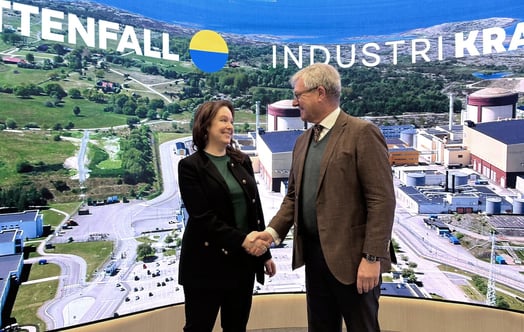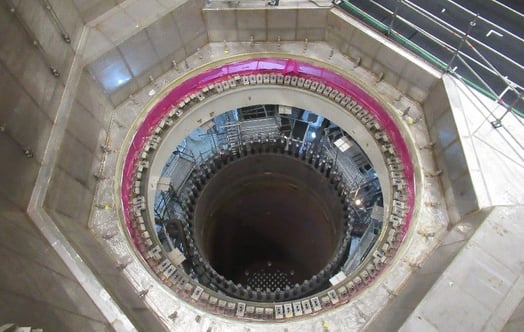Another step has now been taken on the path towards new nuclear power, as Vattenfall has decided to proceed with American company GE Vernova and British company Rolls-Royce SMR. Both suppliers produce modular reactors and are considered to have the potential to deliver within a reasonable timeframe and budget, taking into account the conditions of the Värö Peninsula along the Swedish west coast. The process now continues towards selecting a final supplier.
Video player requires marketing cookies.
To view this content please click here to allow marketing cookies.
Press seminar – Anna Borg, CEO, and Desirée Comstedt, Vice President and Head of New Nuclear, present more information about the background to the decision.
The choice concerns which supplier is positioned to deliver in accordance with the site’s conditions and the overall goals of the project. From 75 suppliers, the selection was narrowed down to four during autumn 2024, and now two have been chosen to move forward in the process.
“This is another step on the way towards the first Swedish nuclear power construction in over 40 years. Our goal is a successful project on the Värö Peninsula, and by that we mean that there are prerequisites to begin operations within a reasonable timeframe and budget at the site available to us. A successful project also lays the foundation for further nuclear developments. We are already looking at the next step to build additional reactors where Ringhals 1 and 2 are currently located,” says Anna Borg, CEO and President, Vattenfall.

Anna Borg, CEO and President, Vattenfall and Tom Erixon, Chair of Industrikraft.
New Swedish nuclear power will require collaboration among many stakeholders. The industry consortium Industrikraft is an initiative involving leading Swedish industrial companies with which Vattenfall has had a close dialogue from the start.
“The process of constructing new nuclear reactors has taken a significant step forward, and there is now a clear and viable project on the Värö Peninsula. Industrikraft welcomes this development and will work together with Vattenfall to create the conditions for the planned joint investment in the project company. It is also crucial that there are long-term stable political conditions”, says Tom Erixon, Chair of Industrikraft.
Evaluation from three perspectives
The evaluation process has been based on three perspectives: technology, site and logistics, and commercial aspects.
The technological maturity of the four reactor types has been assessed, and all are based on proven technology. However, the modular reactors (SMRs) feature a simplified design that incorporates learnings from previous nuclear power projects around the world. All of them use fuel that Vattenfall has experience with through use in our existing reactors and that has well-established supply chains. Although the selected reactors are so-called SMRs, one SMR from Rolls-Royce can deliver as much electricity as the first large-scale reactor in Oskarshamn did when it was built.
At the same time, none of the four evaluated reactors have been built in Europe yet and would therefore need to be adapted to Swedish conditions to varying degrees. The first reactor built in Sweden will therefore involve learning costs. This makes it positive that an SMR entails a lower investment cost. An SMR project can also include several reactors built in series, allowing lessons to be learned from each reactor constructed. The evaluation also showed that the selected suppliers offer a relatively lower cost of electricity.
Site conditions are highly significant. The Värö Peninsula, where the Ringhals nuclear power plant is located, is the place in Sweden that offers the best opportunities for rapid establishment. This is due to access to grid capacity and other critical infrastructure, existing nuclear expertise, and its designation by the Swedish Energy Agency as a national interest for energy production. However, there are also site-specific limitations. The location is tight, and the project will need to use land that is currently the Biskopshagen nature reserve. In parallel, logistics-intensive operations will be ongoing at Ringhals, where the operating time of the existing nuclear power plants is planned to be extended from 60 to 80 years. Our assessment is that during construction the reactors we choose to continue with will have less impact on the existing operations at Ringhals compared to the alternatives, as a result of fewer construction workers on site and less construction area. This is important for Vattenfall, but also for Sweden’s electricity supply and the Swedish industry. Overall, the construction of smaller units in a series is assessed to require less space on site, significantly fewer personnel, and enable manageable logistics, which considerably reduces the risk of cost overruns.
Facts and selection of key evaluation criteria:
- The project has the potential to be delivered within a reasonable timeframe and budget
- Impact on existing operations at the site
- The amount of space required during construction and operation
- The supplier’s experience in building reactors
- Technological maturity of the reactor design
- Development of supplier chains for the project by the reactor suppliers
- The supplier’s financial status
- Access to technical expertise and workforce
- Possibility of licensing the reactor in Sweden
Rapid progress for GE Vernova and Rolls-Royce SMR
The development of the SMR reactors evaluated by Vattenfall is progressing rapidly. For example, Ontario Power Generation (OPG) in Canada has made a Final Investment Decision (FID) to build the first BWRX-300 SMR reactor from GE Vernova, which is expected to be operational in 2029. The Czech Republic has chosen to proceed with Rolls-Royce SMR and plans to commission the first SMR reactor in the mid-2030s. Additionally, the UK, through Great British Nuclear, has selected Rolls-Royce and also plans commissioning in the mid-2030s.
A project with five SMRs from GE Vernova or three Rolls-Royce SMR reactors on the Värö Peninsula will provide a total output of approximately 1,500 MW. Vattenfall is also exploring the possibility of, in a next step, building an additional 1,000 MW on the adjacent site where Ringhals 1 and 2 are currently located. Final investment decisions will be made later in the process.
Decision on supplier
Based on the evaluation, Vattenfall has concluded that there are good prospects for carrying out a successful nuclear power project on the Värö Peninsula within a reasonable timeframe and budget. The financing and risk-sharing model decided by the Swedish Parliament has the potential to provide the necessary framework for a possible investment by Vattenfall.
The formal decision to select GE Vernova and Rolls-Royce was made by Vattenfall’s Board of Directors on 18 July 2025, and all suppliers have been informed.
What’s next?
The next step in the process toward new nuclear power is to submit an application for state risk-sharing. After that, the process continues towards selecting a final supplier. Preparations also continue for submitting applications in accordance with the Environmental Code and the Nuclear Technology Act. During the autumn, the development of collaboration with the industrial consortium Industrikraft will also continue. Several member companies have shown concrete interest in making a joint investment with Vattenfall.
“It is very gratifying that we have now, after an extensive evaluation process involving 75 potential suppliers, come so far that we have selected two. Our focus now is to reach an agreement with the state on the parameters of the financing and risk-sharing model, and to conduct negotiations and a deepened dialogue process with the two remaining suppliers. There is no turnkey solution on the market when it comes to purchasing a new nuclear power plant. Much work remains, even after a final supplier selection, where a long-term, constructive, and positive collaboration with the supplier will be very important,” says Desirée Comstedt, Vice President and Head of New Nuclear at Vattenfall.




